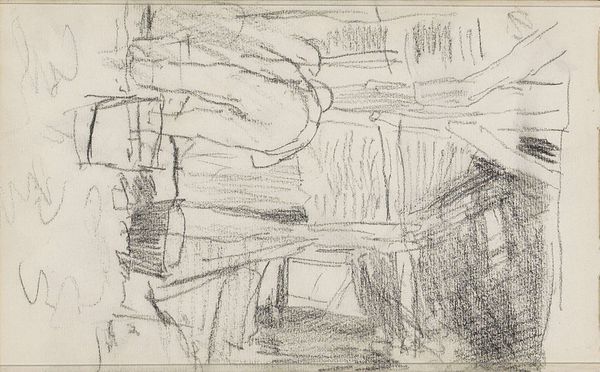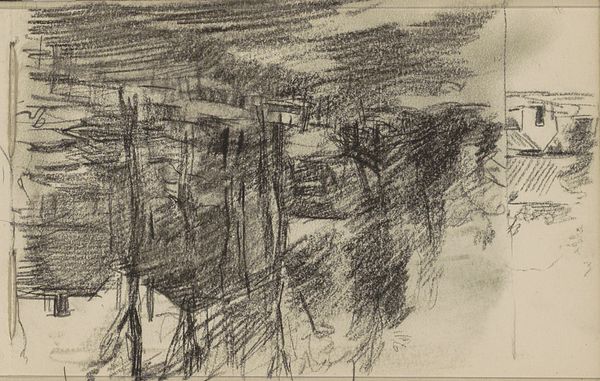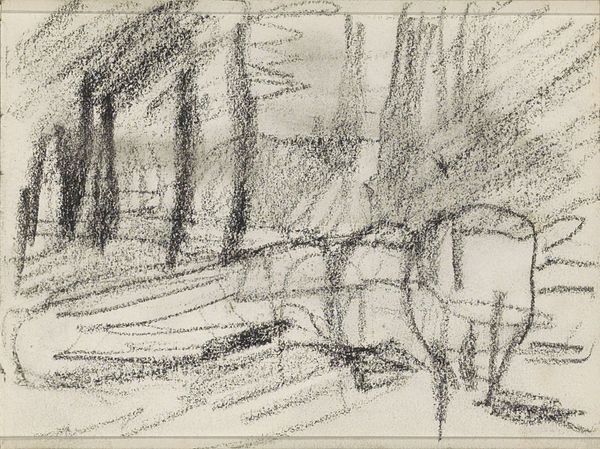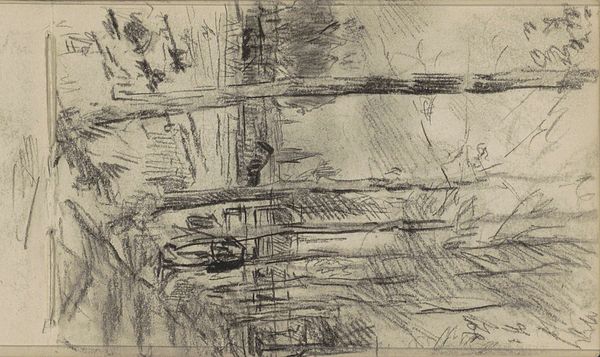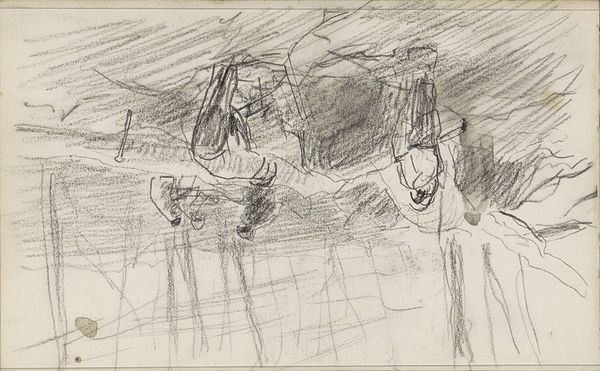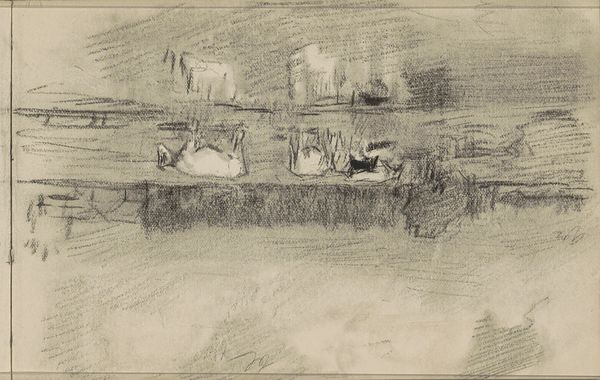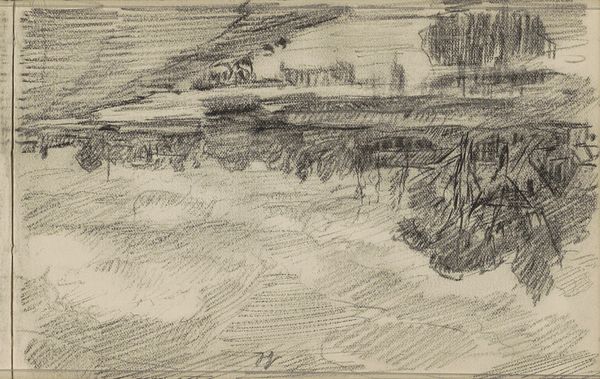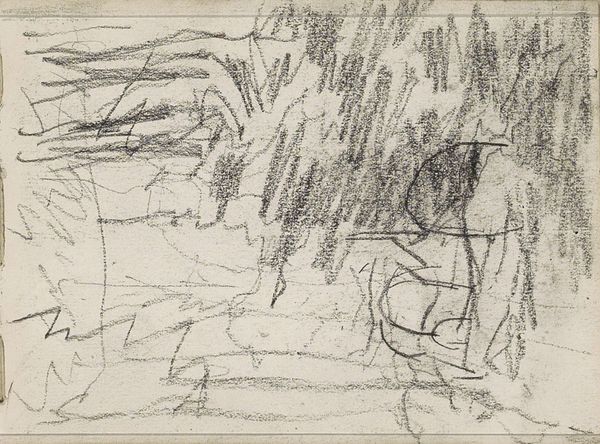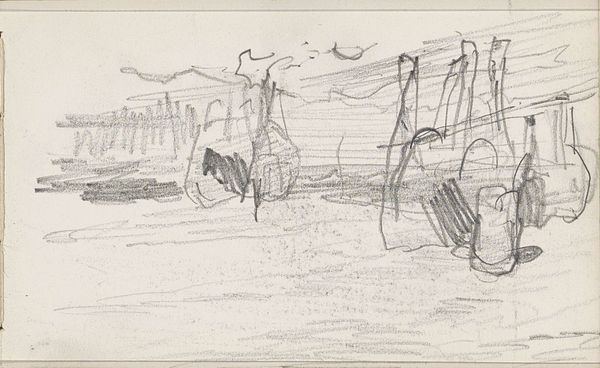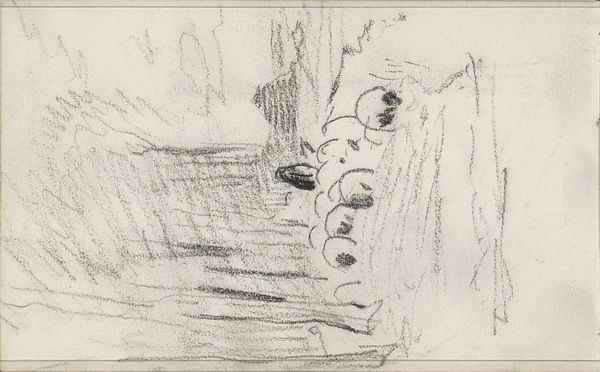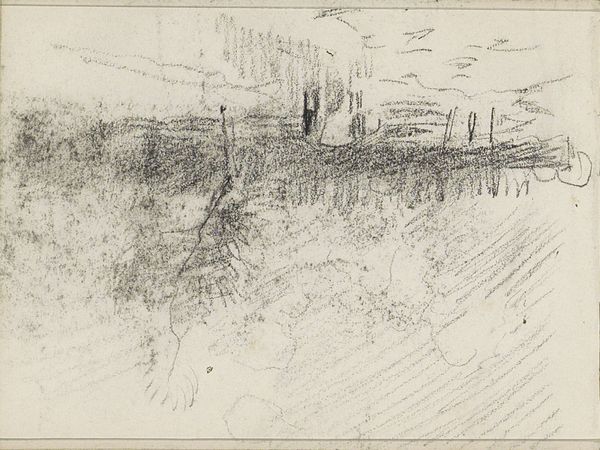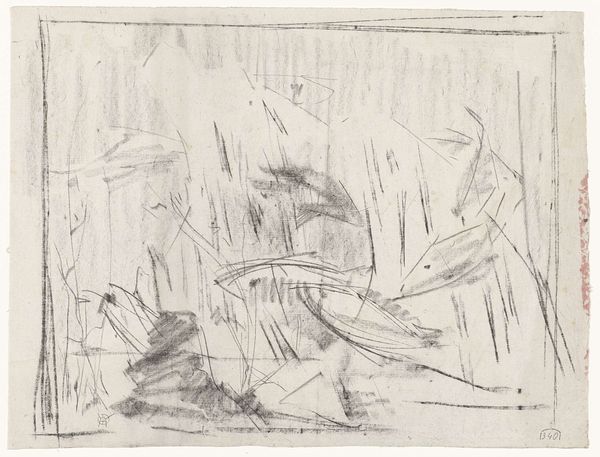
drawing, graphite
#
drawing
#
amateur sketch
#
impressionism
#
pen sketch
#
pencil sketch
#
incomplete sketchy
#
landscape
#
personal sketchbook
#
sketchwork
#
pen-ink sketch
#
graphite
#
sketchbook drawing
#
sketchbook art
#
initial sketch
Copyright: Rijks Museum: Open Domain
Editor: We’re looking at "Cows Before a Row of Trees," a graphite and black crayon drawing by Anton Mauve, circa 1881 to 1888. The landscape is reduced to a series of gestural lines. It’s very raw, and in that way feels incredibly honest. What’s your interpretation of this fleeting scene? Curator: It's interesting that you use the word "honest." I see in this sketch the tension between romanticizing rural life and the economic realities faced by farmers and laborers in the late 19th century. Mauve was part of the Hague School, right? These artists frequently depicted scenes of Dutch peasant life, often softening its hardships. But there's a rawness here, as you pointed out, in the rapid lines that could be interpreted as reflecting the ceaseless toil of agricultural labor. Editor: I see your point. I was focusing on the style, the impressionistic quick strokes. But when you bring up the economic realities, the "sketchiness" takes on another dimension. Could it be Mauve is not just capturing a visual scene, but hinting at a social condition? Curator: Exactly. These sketches, born of quick observation, can hold complex social narratives. It invites us to question whose stories get told, and how. Who are these cows for, and at whose expense is their well-being? Consider the historical context: Land ownership, industrialization impacting agricultural jobs. Art becomes a lens through which to examine those power dynamics. Editor: So, by examining what is included – and what is omitted – we gain insight not just into the artist's style, but also into the broader social landscape of the time. I will never see “impressionistic” sketches the same. Thank you! Curator: And by bringing a contemporary lens to the socio-economic realities, it allows us to continuously examine whose perspectives and labor are historically erased. Food for thought.
Comments
No comments
Be the first to comment and join the conversation on the ultimate creative platform.
